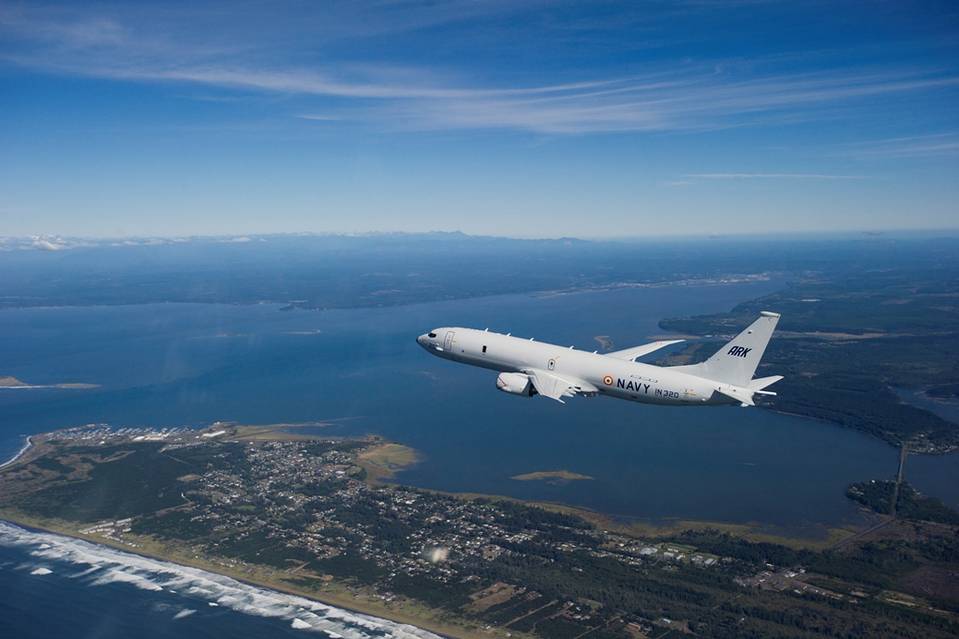As per recent reports, the Indian Navy has tracked seven Chinese Navy warships operating in and around the Indian Ocean region, including an over 27,000 tonnes amphibious vessel. The American-origin P-8I anti-submarine warfare spy planes and other surveillance assets were used for tracking the Chinese naval assets. In pictures accessed by ANI, Chinese Landing Platform Dock Xian-32 can be seen passing through the Southern Indian Ocean region before entering the Sri Lankan watered earlier this month. The P-8I surveillance aircraft have clicked pictures and are constantly activities and movements of the Chinese naval assets.
It must be noted that in the past also, the Indian Navy has detected Chinese movements. Even during the Dokhlam stand-off, the Indian Navy had detected a Yuan class submarine of the Chinese Navy. While China’s intention of dominating the Indian Ocean Region are amply clear, India has made it a point to keep a constant tab on Chinese activities. Last year, it also came to light that the Indian Navy was closely monitoring China’s military deployments in its first overseas Outpost in Djibouti. According to the HT, an official speaking on the condition of anonymity had said, “We detected a Chinese amp- hibious warship in the Indian Ocean last week and suspect it is on its way to Djibouti for carrying out a troop rotation.” He had also said, “Monitoring Chinese activities in Djibouti is just one aspect of our overall strategy of keeping an eye on extra-regional deployments in the Indian Ocean region. At any given time, there are around 50 Indian warships carrying out round-the-clock surveillance of areas of our interest.”
China’s intent
The Chinese strategy of encircling India in line with the ‘String of Pearls’ theory has since long been a matter of concern for India. According to this theory, China is looking to expand its influence in the Indian Ocean Region by raising military or commercial points at strategically located points in order to encircle India and contain Indian influence in the region. The ‘String of Pearls’ refers to the Strait of Malacca, Sri Lanka, Pakistan, the Maldives, the Strait of Hormuz and Somalia. China has also been working towards the strategy for quite some time and that is why India’s detection and monitoring capabilities are strategically crucial.
It is important to mention here that at any given point of time, the Chinese Navy deploys six to seven warships in the strategically crucial region supposedly for carrying out anti-piracy drills in the Gulf of Aden. However, sources say that the main aim of the Chinese Navy is power projection in the Indian Ocean Region. China wants to spread its influence in the region given its importance on account of the sheer volume of its trade that passes through this region.
P-8I aircraft
It must be noted that the eight P-8I spy aircraft were purchased by India in the aftermath of the 2008 terror attacks in Mumbai. They were deployed in 2013 and later on four more spy aircraft were added to the fleet in 2016.
The aircraft is the Indian version of Boeing’s P-8 Poseidon aircraft and boasts of high-end anti submarine-warfare technology, including Raytheon and Telefonics systems that provide 370 degree radar coverage.
Built on the body of a Boeing 737-800 jet with wings of 737-900, the P8-I is an attack aircraft that is capable of discriminating between friendly and hostile vessels far away and then hit them with precision and lethality. The aircraft’s key capability though is to detect and delete hostile submarines apart from small boats in shallow waters which pose a serious threat to Indian naval assets. It is fitted with weapons like the Boeing Harpoon Block II missiles, sonobuoys, Raytheon’s Mk 54 torpedoes.
Last year, the aircraft made its maiden landing at Car Nicobar in the Andamans. This gave India a huge tactical advantage in the Indian Ocean Region. Earlier in March 2016, the Indian Navy had for the first time deployed a P-8I aircraft in Seychelles for surveillance in the Exclusive Economic Zone (EEZ) of the island nation. Seychelles is a small island nation strategically located in the Indian Ocean. The P-8I was Boeing’s first military sale to the country and it is P-8’s first international customer.
The active presence of the Chinese Navy in the region has been a long-drawn process but a major shift came in December 2013 when a Chinese Navy nuclear submarine was picked up for the first time. However, the acquisition of P-8I spy aircraft gave India adequate monitoring capability to keep a tab on the Chinese activities in the region. In June 2019, the Defence Ministry approved buying ten more P-8Is at an estimated cost of US$3 billion.
India is conscious of the entire situation and China’s intentions of dominating the region by encircling India. Earlier this year, PM Modi inaugurated a new network of radar systems in the island country of Maldives. This was done in an attempt to keep a close watch on the Chinese warships in the Indian Ocean Region. It is therefore clear that India understands the importance of developing adequate detection and monitoring capabilities in the Indian Ocean Region and is taking steps in the right direction. In fact, India is building similar networks of surveillance in some other countries- Seychelles, Mauritius and Sri Lanka, which are situated strategically vis-a-vis the Indian Ocean Region. With such moves, India is increasingly making it clear that the Chinese won’t get a free run in its attempts to dominate the Indian Ocean Region and encircle India, as its activities are being closely watched and monitored by the Indian Navy.
